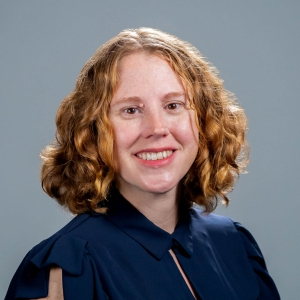Tracy Becker
781 Davis Hall
Wednesday 9:30 - 10:30 am
Friday 11 am - 12:30 pm

Tracy Becker is an Associate Professor of Civil and Environmental Engineering at UC Berkeley. Becker’s research focus is structural dynamics and design and using novel materials in design. Her research group is developing a more comprehensive understanding of these systems that protect structural integrity in natural or man-made disasters, causing the least possible amount of damage
Ph.D., Civil and Environmental Engineering (SEMM) - University of California, Berkeley, 2011
M.S., Civil and Environmental Engineering (SEMM), University of California, Berkeley, 2007
B.S., Structural Engineering, University of California, San Diego, 2006
Becker’s research focuses on increasing the reliability of communities by facilitating the adoption of advanced structural systems. Her current research projects include the collapse behavior of isolated buildings, modeling updating in hybrid simulation, inverse structural design through ML, and the innovative design of steel components, Here are a few of the research projects Becker is currently working on below:
_1.jpg) | Collapse behavior of isolated buildings While isolation performs outstandingly under design level motions, performance under extreme earthquakes is less well understood. Becker’s research group explores how design choices affect near-collapse performance through dynamic experimental friction tests pendulums bearing up to their limits and numerical incremental dynamic analysis to compare the effects of various isolation systems. |
_1.jpg) | Modeling updating in hybrid simulation Hybrid simulation, a method in which a poorly component of the structure is physically tested while the remainder is numerically modeled, has become a promising solution to the costs and physical limitations of large-size tests. However, this single test cannot represent the demands and behavior of the components’ class across the structure under extreme loading. Becker’s research in this area involves developing an enhanced model update to integrate information into the numerical model as it is learned over the course of the hybrid test. |
_1.jpg) | Inverse structural design through ML While isolated structures offer enhanced, predictable behavior under typical ground motions, their behavior under extreme motions is complex and may not reach targeted goals as currently outlined in various codes. To address this design issue, Becker’s research group uses Gaussian process surrogate modeling to associate the probability of building limit states with the input design parameters. |
News
| Title | Publication Date |
|---|---|
| SEMM Community Honors M.S. Graduates at Annual Luncheon |
Spotlights
No mentions in Spotlights
Student Updates
| Title | Publication Date |
|---|---|
| Ph.D. and Undergraduate Students Prepare for Pier Wall Test |


